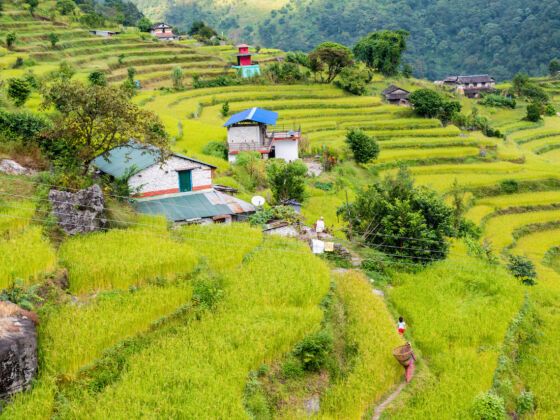[Editor’s note: For a detailed itinerary tailored to independent travelers, check out How to Independently Trek Nepal’s Annapurna Sanctuary.]
Nepal is a country of great diversity. Though small, it contains a wide variety of climates, terrains, cultures, and people. Still, the reason most travelers make the effort to visit Nepal are the Himalaya mountains.
If your goal is to get into the high mountains, there is no better path than the trek into the Annapurna Sanctuary.
